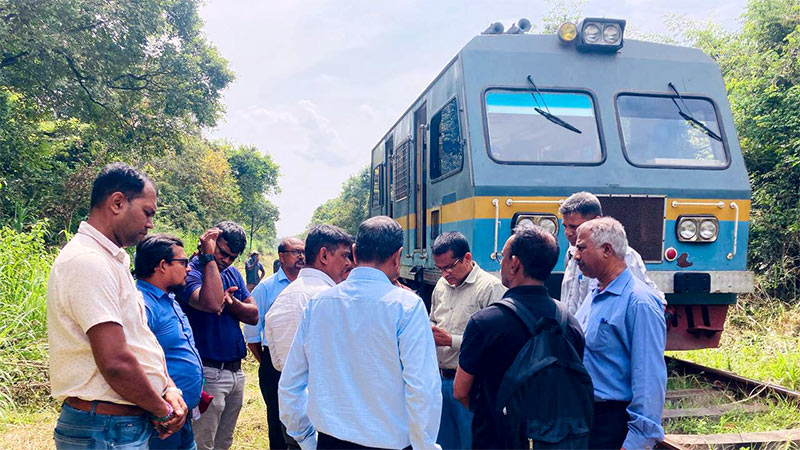Sri Lanka develops action plan to prevent elephant-train collisions

The Department of Wildlife Conservation, in collaboration with key government agencies, has initiated an action plan to minimize harm to wild elephants caused by train collisions in Sri Lanka.
The Ministry of Environment, the Department of Railways, the Department of Wildlife Conservation, and the Central Environmental Authority are jointly implementing this plan, focusing on high-risk railway sections where elephant-train accidents frequently occur.
Key Measures in the Plan
Authorities have identified seven hilly areas between Gal Oya and Hingurakgoda railway stations where such incidents are common. Soil mounds in these locations will be removed to provide elephants with a safer passage.
Additionally, railway personnel including drivers, station masters, track engineers, and assistant drivers will undergo awareness programs to better understand the risks and necessary precautions.
Signage at elephant crossing points will be updated and improved to warn train operators.
To enhance visibility and prevent accidents, authorities will clear shrubs up to 10–20 meters on either side of railway tracks in curved sections. Moreover, concrete stones will be placed between railway sleepers along a 20 km stretch from Gal Oya Junction toward Kantale to allow elephants to move more safely.
Another crucial measure is the installation of solar-powered LED lamps along railway tracks to improve nighttime visibility for train drivers. Additionally, modern train engines with improved visibility and speed control will be introduced on Eastern railway lines. These trains will also feature LED notice panels to inform drivers about speed regulations in critical areas.
Further safety steps include completely sealing off tube wells on the left side of the railway track between Habarana and Kantale and constructing water-filled pits to ensure elephants have access to water through alternative channels. Two reservoirs will also be built within the wildlife reserve encountered along the railway line past Habarana toward Kantale.
Recognizing the stress faced by railway workers operating in these high-risk areas, psychological support and wellness facilities will be provided to train drivers traveling between Colombo and the Eastern region.
Field Inspection Confirms Progress
Today, government officials, including the General Manager of Sri Lanka Railways, the Additional General Manager of Railways, and the Assistant Director of the Polonnaruwa Wildlife Zone, conducted a field inspection using a railway trolley along the Eastern line from Palugaswewa to Punanai.
During the inspection, officials noted that vegetation on both sides of the railway tracks had been cleared and that updated speed limit signs had been installed. The General Manager of Railways confirmed that initial steps to implement the action plan are already in progress.
This comprehensive effort marks a significant step toward safeguarding Sri Lanka’s wild elephants while ensuring the safety of railway operations.
Authorities are hopeful that these measures will reduce elephant-train collisions and promote coexistence between wildlife and railway transport.

Latest Headlines in Sri Lanka
- Indian PM Narendra Modi arrives in Sri Lanka for official visit April 4, 2025
- Remand prisoner stabbed to death in Boossa Prison April 4, 2025
- Aluthgama Police officers suspended over drug party April 4, 2025
- Court orders re-acceptance of rejected LG election nominations April 4, 2025
- Yoshitha and Daisy indicted, granted bail by Colombo High Court April 4, 2025


